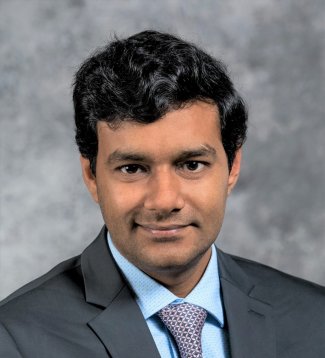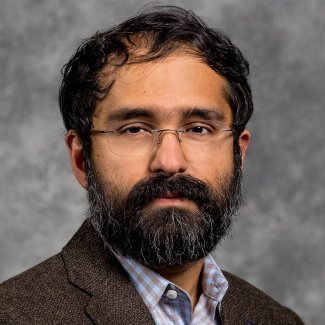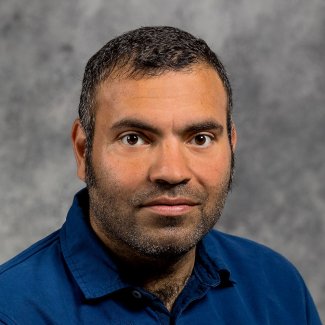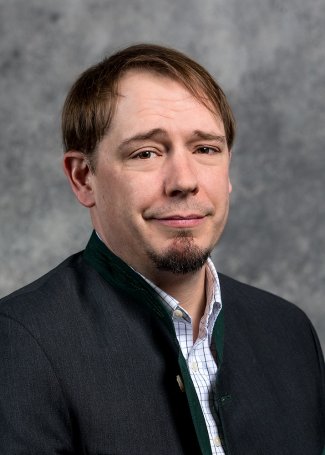Awards Granted
- NIH: AIM-AHEAD | $1,091,316
- Pl: Dr. Semhar Michael (Math/Stat, SDSU)
- Co-PIs:
- Dr. Moradi (Math/Stat, SDSU)
- Dr. Varilek (CON, SDSU)
- Dr. Brooks (Health informatics, DSU)
- Dr. Ngorsuraches (Pharmacist, Auburn University)
- NSF: RII Track-4 | $299,797
- PI: Dr. Aritra Banerjee
- NSF: CAREER
- USDA: PTE GEVO
- NIJ Research and Development in Forensic Science for Criminal Justice Purposes
Developing Explainable Machine Learning and Computational Methods for Identifying Geographic and Racial Disparities in End Stage Renal Disease

$1,091,316
PI: Dr. Semhar Michael (Math/Stat, SDSU)
Co-PIs: Dr. Moradi (Math/Stat, SDSU), Dr. Varilek (CON, SDSU), Dr. Brooks (Health informatics, DSU), Dr. Ngorsuraches (Pharmacist, Auburn University)
End-stage renal disease (ESRD) affects nearly 800,000 persons in the US and disproportionately affects minority groups like American Indians (AIs) and Hispanics. Despite an overall decrease in adjusted ESRD, its prevalence among Hispanic and AI people is more than double of White. Additionally, all-cause mortality from ESRD abruptly increased for those receiving hemodialysis from 2019 to 2020 with age-adjusted mortality rates increasing by 11% for Whites and an alarming 29% increase for Hispanic persons. Furthermore, there is a staggering financial impact of ESRD. In 2019, total Medicare fee-for-service spending for those with ESRD (including prescription drugs), accounted for about 7% of the Medicare paid claims costs that year. This significant financial burden disproportionately affected AI and Hispanic populations.
Hispanic and AI individuals with ESRD who reside in South Dakota (SD) have experienced high levels of health disparities. Many of these people live in close geographic proximity throughout SD’s rural and frontier counties where SDOH have a substantial impact on health outcomes, such as chronic underfunding and proximity to healthcare services,6,7 racial discrimination,8-10 geographic placement onto reservations (for AIs),11 and extensive poverty.12-14 It is essential that we address these disparities as the AI and Hispanic populations expand within SD. From 2010-2020, the AI population grew from 10.1% to 11.1%, and SD had the nation’s second fastest-growing Hispanic population with an expansion from 2.7% to 4.4%.4,5 SD ranked 12th worst in the nation for ESRD mortality rate in 2020 and when isolating Hispanic and “non-Hispanic other” (which includes AI), SD ranked 4th worst in the nation for mortality rate.1 With the expanding population and the disparity in mortality rates, there is a critical need to determine disparities in the mortality of AI and Hispanic persons with ESRD in SD.
Bio-Inspired Solutions to Prevent Soil Erosion in Farmland and Scouring in Fluvial Regions

$299,797
PI: Dr. Aritra Banerjee
The loss of the topsoil from agricultural lands by different means has been known to be a major issue for regions in South Dakota and nearby regions. Such losses have seriously affected the fertility of the land, agricultural productivity and crop health, and are prone to erosion. Climate change is expected to induce further stresses through extreme climatic conditions like dust storms, flooding, and winds during drought-like conditions. This will increase the chances of erosion, amplify the removal of topsoil, and result in failure of earthen civil infrastructure like dams, levees and embankments. This may also result in scouring in rivers and streams and results in instability of bridge foundations.
The objective of the proposed project is to investigate the feasibility of using bio-inspired solutions such as sulfate-reducing bacteria (SRB) and dental biofilms to enhance the strength of soils to mitigate soil erosion and scouring and enhance soil fertility and resiliency of civil infrastructure. The use of SRB will aid in the use of lime in sulfate-rich soils without the possibility of the formation of ettringite which is a highly expansive mineral and causes sulfate-induced heave. These bio-inspired solutions using SRB and dental biofilms in soils will demonstrate the application of such innovative techniques for agricultural purposes and civil infrastructure.
The Contagion Science: Integration of Inhaled Transport Mechanics Principles Inside the Human Upper Respiratory Tract at Multi Scales

$540,428
PI: Dr. Saikat Basu
This CAREER project aims at integrating numerical simulations of inhaled transport in anatomic respiratory cavities with reduced-order theoretical fluid mechanics techniques to develop models for instability effects emerging therein. The project will also characterize the intra-airway advective transport trends through scaling arguments. The fluid dynamic inferences will be merged with cross disciplinary virological data to track the mechanics of respiratory infection onset. The proposed project will blend the research techniques and results to guide educational outreach efforts for the regional Native American community and for the on campus nursing program. An innovation will be the incorporation of fine arts in the educational modules. The PI will also facilitate global academic partnerships and industry-academia synergy, and promote wider dissemination through popular press and multilingual YouTube content.
Increasing the Adoption and Generation of Climate-Smart Practices to Produce Low Carbon-Intensity & Net Zero Sustainable Products

$1,862,199
PI: Dr. David Clay
Co-PI: Dr. Hossein Moradi
South Dakota State University (SDSU) and a contracted partner, Google, will provide IT cloud services, remote monitoring data, data intelligence, soil management data, and machine and sensor (IoT) data aggression.
SDSU will assist Gevo in increasing adoption of climate-smart practices through producer participation in a regenerative agriculture study. A notable area of needed improvement is the accurate measurement of nitrous oxide emissions from conventional practices and from climate-smart agricultural practices. The application of synthetic nitrogen and salt-based urea fertilizers results in emissions of high Global Warming Potential pollutants, like nitrous oxide, and negatively impacts. Gevo is partnering with SDSU to monitor and quantify more accurately these air and water impacts, as well as encourage the adoption of climate-smart practices that reduce the need for synthetic nitrogen-based soil amendments.
Statistical Foundations of Score-Based Methods in Forensic Identification of Source Problems

$612,286.00
PI: Dr. Christopher Saunders
Weight of evidence (WoE) approaches have been suggested as alternatives to the identification paradigm to forensic evidence interpretation. Three statistical definitions of probability have spawned the three most used methods to quantify the WoE: the Two-Stage approach, Bayesian method, and machine-learning or artificial intelligence (AI) methods. However, it is often difficult to define the probability functions necessary to conduct these analyses. Therefore, score-based methods have been proposed for numerous evidence types such as fingerprints, handwriting and firearms, among others. Traditionally, score-based methods focus on univariate distributions for assessing the evidential value instead of the high-dimensional distributions of the original features. Scores are easily incorporated into all three methods of quantifying WoE, but rarely in a statistically rigorous manner. It has been shown that score-based methods for assigning the WoE do not share the same basic properties as the feature-based methods.
This research project proposes to extend basic research components of the score-based methods developed under previous NIJ Awards in a statistically rigorous manner for the interpretation of evidence for the classical and Bayesian paradigms. This project will develop a formal set of guiding principles for applying score-based methods, provide a rigorous foundation for the use of multivariate scores that map the full evidence- including the background population to a set of scores, design statistical methods to construct formal Bayes Factors and Two-Stage approaches when the score is an unknown monotonic transform of the likelihood ratio, and develop strategies that allow for the adaptive estimation of the score from the observed evidence.

